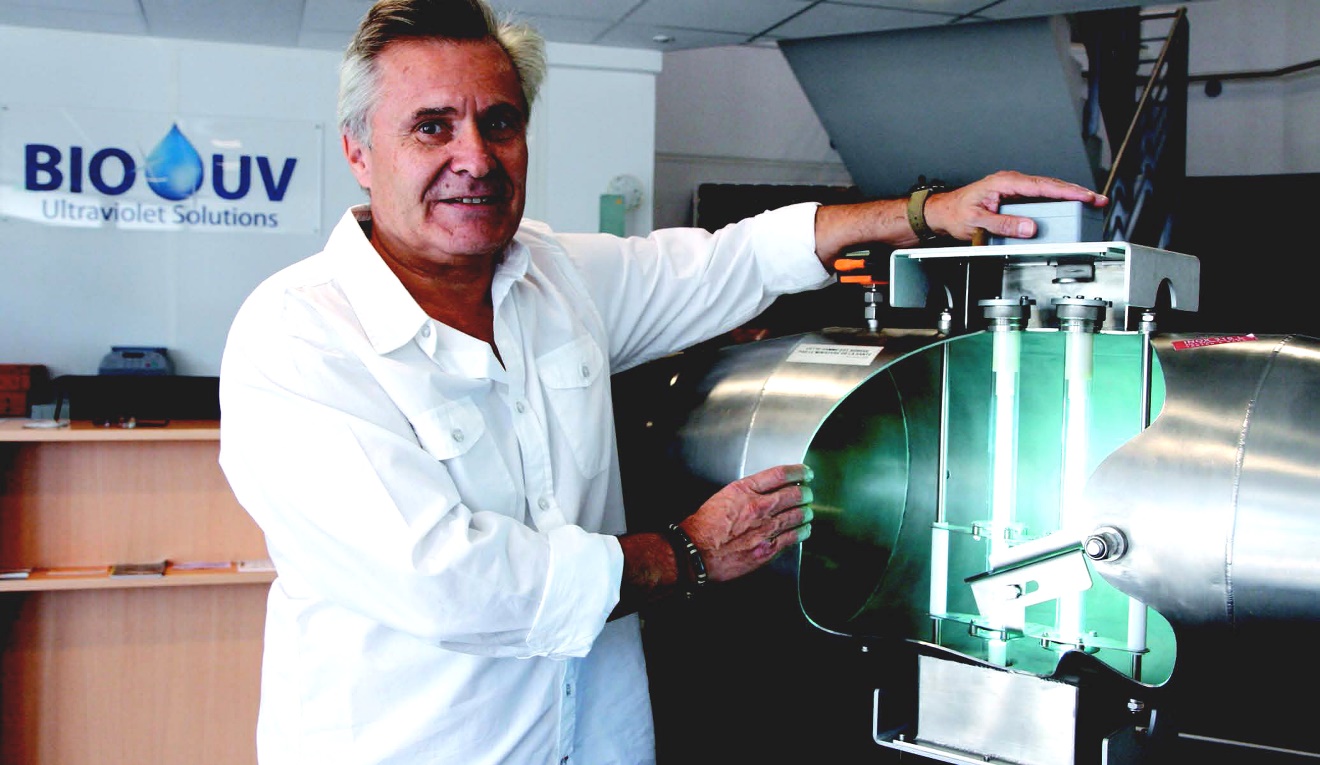
Ships unwittingly convey invasive species around the world, and a pioneering French company uses ultraviolet rays to wipe out the unwanted passengers
When a Chinese freighter put into Lima’s El Callao seaport in 1991, cargo was not the only thing it unloaded. It dumped ballast water too, and with it a virulent Asian strain of cholera bacteria. Within weeks, the disease had contaminated seafood and torn through the slums of Peru’s capital, eventually spreading to 11 other countries. Latin America found itself facing a cholera outbreak for the first time in over a century. By the time the epidemic finally subsided, some 9,000 people were dead.
What happened in Peru spotlights a little-known side effect of our globalized economy. The ships that transport more than 80 percent of the world’s commodities also move between 3 and 5 billion tonnes of seawater around the planet each year. They do so as ballast—the water carried in huge tanks that ensures a vessel remains stable at sea. When a ship unloads its cargo, it takes on ballast water to compensate for the missing weight. This ballast is then dumped when the ship takes on cargo at its next port of call.

Ballast water contains a variety of organisms, including bacteria, viruses and the adult and larval stages of marine plants and animals. When discharged, these non-native species can thrive in their new habitats, causing devastating ecological, economic and public health damage to the surrounding environment.
To deal with the problem, the UN’s International Maritime Organization and the US Coast Guard have both adopted regulations that will require ships to treat all ballast before discharging it into coastal waters across the globe. Various companies—using methods of treatment that include chemicals, heat, electricity and ultrasound—are now tackling the spread of invasive species by shipping. One of the most innovative and ecologically friendly of them has roots that trace back to a residential swimming pool in the south of France.
With its sidewalk cafes, terracotta roof tiles and chirping cicadas, the French town of Lunel feels a long way from the bustling sea-lanes of international trade. Yet it was here that Benoît Gillmann—BIO-UV’s founder, then working in the medical equipment business—first stumbled across the technology that has put his company at the forefront of ballast water treatment, through the BIO-SEA brand.
“Someone told me about a guy who was using a gizmo he’d built in his garage to treat his swimming pool without chlorine,” Gillmann explained. “I thought that sounded great and got him in to do mine. The system worked so well that I decided to put it on the market.”
The BIO-SEA system is non-chemical, using ultraviolet light to inactivate all living organisms present in the water pumped into or out of a ship’s ballast tanks. After passing through a compact filter, the water is exposed to UV-C radiation at the 254 nanometer wavelength—exactly the kind of ultraviolet light from which the Earth’s atmosphere protects us.
In 2000, the company began marketing the technology for swimming pool and general water treatment. Ten years later, it spotted rich new opportunities in the international effort to tackle the ballast water problem. Following a three-year R&D program and investment of €2.5 million (US$2.8m), its UV treatment system was successfully adapted to marine applications, obtaining full IMO certification in 2013, with US certification set to follow in 2016.
In the process, BIO-UV has grown from a small business to an international company with its own US subsidiary. “In 2000, we started from nothing,” said Gillmann. “There were just three of us. Today we have 49 employees in France and 20 in the US.” He retains a majority stake in the business, with the remaining 46 percent owned by three investment funds. The last two entered the company’s capital in 2010 and 2014 respectively, specifically attracted by its growth prospects in the emerging market for ballast water treatment. BIO-UV forecasts its revenues to rise from €12 million today to €30 million by the end of 2018.
But it hasn’t all been plain sailing. “Treating the world’s ballast water is a huge challenge in itself, but running a business in France today is an even greater one,” said Gillmann. “We don’t have the financial resources of the big groups and the regulatory environment gets more complicated by the year.”
And yet the company continues to go from strength to strength. In 2013, it supplied a ballast water treatment system for the new flagship of the CMA CGM Group, the world’s third-largest shipping company: with a capacity of 18,000 containers, the CMA CGM Vasco De Gama is one of the biggest cargo ships in the world. “That’s a great source of pride and recognition for the company,” said Gillmann. It’s good news for the rest of the planet, too.
By Nicholas Le Quesne for Sparknews


























